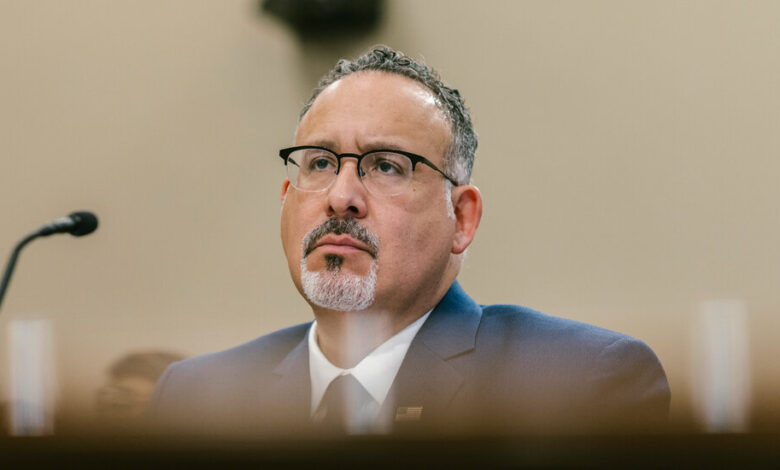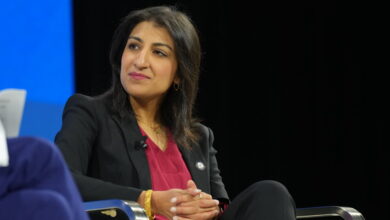Student Aid Woes Stalk Cardona During Appearance on Capitol Hill

As Miguel A. Cardona, the education secretary, appeared before lawmakers on Wednesday to make his agency’s case for funding next year, members of both parties had something else on their minds: this year’s chaotic college admissions process.
Republicans peppered him with questions about the botched rollout of the new Free Application for Federal Student Aid form, which has derailed college admissions this year. Several of them asked whether the agency had diverted resources away from the project in its pursuit of canceling student debt.
“There’s nothing more important right now at the Department of Education,” Mr. Cardona told the House Appropriations Committee of the aid form, saying that the agency was successfully juggling multiple priorities with the resources available. “We’re working on this around the clock.”
While Mr. Cardona was testifying, the House Subcommittee on Higher Education and Workforce Development held a separate hearing where lawmakers from both parties said the problems with the aid form had harmed aspiring college students.
“This isn’t just a petty list of grievances,” Justin Draeger, the chief executive of the National Association of Student Financial Aid Administrators, told lawmakers. “This really adds up to a crisis of credibility for the Department of Education.”
Mr. Draeger said that schools his organization worked with had run into two additional issues affecting the department’s calculations, which have rendered as many as 40 percent of the financial records schools have received so far unusable.
Since the department started using the new form in late December, bugs and design flaws have repeatedly hampered its processing of financial information used to calculate federal aid, which the agency ultimately hands over to colleges and universities.
As a result, college administrators have been unable to tell many students how much they can expect to pay. Many schools have pushed back their enrollment deadlines to give students time to make decisions about where to attend college based on what they can afford.
Rachelle Feldman, a vice provost at the University of North Carolina, Chapel Hill, testified on Wednesday that her school had yet to send a single official aid offer to accepted students — offers that normally would have been sent alongside acceptance letters by the end of March.
She said her school was now hoping to send aid offers to students by the first week of May at the earliest, well after the date by which many students would have already enrolled in other years.
Since April, the Education Department has maintained a “fast news” page, with regular updates about its progress troubleshooting the FAFSA form. An update posted on Wednesday said the department planned to reprocess many of the faulty records sent to schools by May 1.
A spokesman for the Education Department said that officials believed they had fixed most of the major bugs in the form, and that the department’s staff was processing submitted applications within one to three days, a timetable Mr. Cardona also presented to lawmakers on Wednesday.
But the reaction from Congress laid bare the shaky ground Mr. Cardona finds himself on this spring, as many of the department’s goals have been overshadowed.
Mr. Cardona said on Wednesday that despite the problems with the form this year, the new, simplified version would make the process of applying for aid easier for students moving forward.
Even in typical years, many students who are eligible for aid do not apply for it, and several Democrats voiced concern that unanticipated roadblocks this year would disproportionately affect low-income and first-generation students who may have been thrown off by flaws with the form, or may have concluded that taking out loans was their only option to pay for college.
“The data portend a catastrophic decline in college enrollment this fall for the high school class of 2024 unless something changes very quickly,” testified Kim Cook, the chief executive of the National College Attainment Network.



